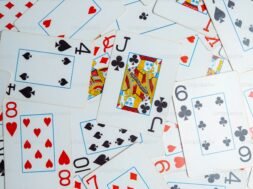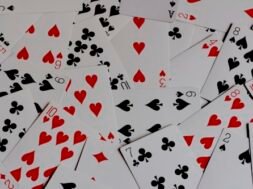The Hidden Math of Randomness in Snake Arena 2
Snake Arena 2 is more than a fast-paced simulation—it is a living laboratory where fundamental concepts in computer science, probability, and algorithmic design converge. At its core, the game embodies the intricate dance between determinism and unpredictability, inviting players to navigate environments shaped by randomness as a central gameplay and algorithmic challenge.
Randomness and Computational Complexity: From NP Problems to Game Dynamics
Randomness in Snake Arena 2 is not mere chance; it reflects deep computational principles. The game’s evolving state space resembles NP (Nondeterministic Polynomial time) problems—classic challenges in theoretical computer science where solutions can be verified quickly, but finding them remains computationally intensive. Unlike NP-hard problems that grow exponentially with state size, the game’s dynamic obstacles and shifting environments create a combinatorial landscape players must explore efficiently in real time.
| Concept | NP Problems | Game State Exploration | Combinatorial State Spaces |
|---|---|---|---|
| Require checking all possible paths to find optimal routes | Player must evaluate branching choices under time pressure | Infinite permutations of obstacles and snake movement | |
| No known polynomial-time solution | Heuristic pathfinding approximations used | Emergent complexity from random placement and timing |
“The best strategy in Snake Arena 2 isn’t just about avoiding collision—it’s about managing the growing uncertainty encoded in the game’s state transitions.”
The Role of Probability: Bayesian Thinking in Adaptive Game AI
To survive, the game’s AI leverages Bayesian inference—a statistical framework for updating beliefs in light of new evidence. By analyzing observed player behavior and environmental changes, the AI dynamically adjusts its path and evasion tactics, mirroring human-like learning under uncertainty.
Imagine a scenario where the AI learns that a particular wall segment is frequently crossed, increasing collision risk. Using Bayes’ theorem, it revises its probability model: if prior belief in danger was 30%, but recent observations show 80% collision frequency, the updated belief rises sharply—prompting preemptive route changes.
Cryptographic Parallels: Security, Entropy, and Computational Difficulty
Just as RSA encryption relies on the intractability of factoring large semiprimes—a problem believed resistant to efficient classical algorithms—Snake Arena 2 exploits entropy and randomness to create secure, unpredictable game states. Breaking a 2048-bit RSA key requires roughly 1017 operations, a benchmark illustrating computational hardness.
Entropy in the game’s random number generators ensures each run presents a unique challenge, much like cryptographic keys derived from random seeds. This shared essence of unpredictability underscores how randomness serves both security and gameplay depth.
| RSA Factoring | Difficulty: ~1017 operations for 2048-bit keys | Snake Arena 2 | Unpredictable, evolving obstacles per play session |
|---|---|---|---|
| Entropy Source | Cryptographic randomness | Pseudo-random snake movement and environment shifts | |
| Security Goal | Prevent key exposure | Prevent collision and maintain challenge |
Snake Arena 2 as a Living Demonstration of Randomness
At its technical core, Snake Arena 2 uses pseudo-random number generators (PRNGs) to simulate natural unpredictability. These algorithms generate sequences that appear random but are fully determined by initial seeds—enabling consistent yet dynamic gameplay.
Players experience randomness not as chaos, but as structured uncertainty: obstacles appear in varied sequences, timing shifts unpredictably, and path options evolve. This mirrors how algorithms balance deterministic rules with stochastic inputs to model real-world complexity.
Hidden Mathematical Depths: From Algorithms to Player Intuition
Snake Arena 2 bridges abstract theory and tangible experience by embedding core computer science concepts into gameplay. Players implicitly apply probabilistic reasoning and heuristic decision-making—skills analogous to those used in algorithm design and complexity analysis.
Like adaptive algorithms that refine strategies based on partial observations, players learn to anticipate high-risk zones through pattern recognition, not just reaction. This intuitive grasp enhances both performance and engagement—turning mathematical principles into lived strategy.
Conclusion: The Synergy of Math, Randomness, and Game Design
Snake Arena 2 exemplifies how randomness, far from being mere entertainment, is a sophisticated mathematical construct embedded in interactive systems. Its challenges emerge from combinatorial state spaces akin to NP problems, use Bayesian inference to simulate adaptive intelligence, and rely on entropy-driven unpredictability mirroring cryptographic hard problems.
Understanding these links deepens not only appreciation of the game but also insight into computational theory and probabilistic reasoning. Randomness in games reveals profound truths about complexity, learning, and structured uncertainty—proving that beneath every snake’s movement lies a universe of hidden math.
“Randomness in games is not disorder—it’s a carefully orchestrated layer of complexity, revealing the elegant interplay between chance and computation.”
Explore Snake Arena 2 and experience mathematical randomness firsthand





